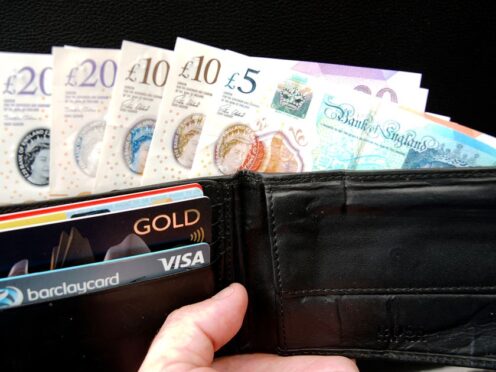
Half of consumers have cut back on their non-essential spending so far this year, with eating out the most likely cull from budgets, a survey suggests.
Just 3% of consumers say that they have been able to spend more on non-essentials in the first quarter, with 52% cutting back, according to the KPMG Consumer Pulse survey.
Eating out was the most common discretionary spending cut, listed by 72% of those who are scaling back, followed by clothing purchases (62%) and takeaways (58%).
When asked what they would most likely do should prices of goods and services drop, 47% said they would put the money into savings and 20% said they would put money towards essential costs such as mortgage or rent, energy, fuel and food.
Just 11% said they would increase their non-essential spending.
Consumers are continuing to adapt their buying behaviour to save money, with 38% buying more own-brand over the first three months of the years, 37% buying more promotional or discounted items, and 35% buying fewer items.
Taking or booking a holiday was the most common big ticket purchase in the last three months, for a quarter of consumers, while 35% also said that they would be spending money on a holiday during the remainder of 2024.
One in 10 said they had carried out home improvements so far this year, with a further quarter of consumers saying they will be doing so by the end of the year.
A quarter of consumers said they do not plan to spend any of their savings this year, while a quarter also said that they are currently using their savings to help meet their essential costs.

Linda Ellett, head of consumer, retail and leisure markets for KPMG, said: “Essential costs remain at a level where nearly half of the consumers we surveyed said they have cut their non-essential spend in the first quarter of the year.
“Should macroeconomic conditions lead to an easing of pressure on household budgets, then four times more consumers say they would boost or replenish their savings, rather than spend more on non-essentials.
“If true, it raises significant questions about whether taming inflation leads to a consumer spending boom, or just a rebuilding of savings balances that some consumers have used to offset, or totally pay for, the higher cost of essentials over recent years.”
One Poll surveyed 3,000 UK consumers between March 13-19.

Enjoy the convenience of having The Sunday Post delivered as a digital ePaper straight to your smartphone, tablet or computer.
Subscribe for only £5.49 a month and enjoy all the benefits of the printed paper as a digital replica.
Subscribe